https://www.eunis.org/eunis2022/
Annual EUNIS Congress on 1st-3rd June 2022 in Göttingen, Germany
Collaborative notes (open)
2022-05-31 (Pre-Congress Day)
Future-proofing the European Higher Education Area: fortress Europe or castles in the air?
Mallin mukaisesti pienryhmissä lapuilla saatiin seuraavia havaintoja:
Serious Security Risks and the Risk of Management not taking it seriously
Keskustelusta poimittu ajatus: asiantuntijat saattavat kehittää ja käyttää panostuksia suhteettoman paljon nimenomaan niille tietoturvan osa-alueille, joista heillä erityistä asiantuntemusta. Tasapaino tässäkin tärkeä.
2022-06-01
Good for All
Wolfram Horstman
https://www.eunis.org/eunis2022/sessions/keynote-by-prof-dr-wolfram-horstmann/
- "Koala" tarjoaa pitkäaikaistallennuksen palveluita
eResearch Alliance
As an example for structural delvelopment
- Kirjastopalveluiden ja it-palveluiden yhteistyö
- Noin 5 FTE:tä
- "Data police on campus"
- Infrat, ym. vastaavalla tavalla kuin tiedejatutkimus.fi:ssä Hanna-Mari Puuska EUNIS 2023 keynote? (cc Heidi Laine )
Tämä "outreach" Forum Wissen tilaisuus ministerin johdolla nähtiin eilen, kun saavuttiin
German National Research Data Infrastructure (NFDI) – Structure and Perspective
Yourk Sure-Vetter, NFDI Nationale Forschughsdartn Infrastrukture
https://www.eunis.org/eunis2022/sessions/keynote-by-prof-dr-york-sure-vetter/
More and more research results are achieved by using already existing research data. (FAIR principles)
However, significant efforts are still required to find the right data set, understand it and use it.
Vision: Research data setes are FAIR*. For all**. Forever**.
** according to data access categories
*** Alice: "how long is forever?". White rabbit: "Sometimes, just one second."
Olikohan tämä nfdi hanke esillä Kroatiassa seminaarissa jossa Hanna-Mari ja Joonas kävivät - tsekataan
Täältä löytyy tietoa NFDI hankkeen etenemisestä:
https://zenodo.org/communities/nfdi?page=1&size=20
Onko tää NFDI meidän partneriverkostossa (International Engagement portfoliossa Maijastiina Arvola , Johanna Törnroos , Elena Iiskola, Sara Garavelli ). NFDI näkyy meillä EOSC:n ja Tutkimustietovarannon tiedoissa)
Zero trust: An approach to manage hostile environments / Cisco
Dietmar Hilke
https://www.eunis.org/eunis2022/sessions/zero-trust-an-approach-to-manage-hostile-environments/
RAjatut muistiinpanot materiaaleista saatavilla.
Research management track EUNIS 2022
Digital Identity track EUNIS 2022
Hybrid Learning track EUNIS 2022
Digital learning track EUNIS 2022
Digital learning and teaching throughout the pandemic: learning from the digital experiences of students and staff during 2020 and 2021 / Clara Killen, JISC
- Focus of the survey themes switched to online/remote learning during the pandemic
- Key findings
- Barriers to online participation may be very hard to overcome. Poor wifi quality, mobile data costs
- Technical barriers; access to the right technology
- Infrastructure
- Support for learning, teaching and assessing online
- Wellbeing, changing practices,
- Most survey respondents identify they need guidance, but only few say their skills have been assessed
Impact of the COVID-19 pandemic on the digitalization and strategic development of German universities
- Survey geared towards university leaders. Some 400 responses from HE.
- General impacts:
- change in teaching formats
- technical-didactic support services provided for lecturers
- spatial-technical infrastructure
- Only small differences identified between Universities and Universities of Applied Sciences
- Arts Universties had higher percentage of classroom attendance
- Difference between STEM focused Universities and others; with STEM universities more changes after the start of the pandemic
- STEM universities combine more classroom & online teaching, use more innovative teaching and examination concepts and spaces. Some differences also in the use of AI algorithms and
- Half the universities have a digitalization strategy
- Only minor changes in the changes made between the institution during the pandemic
- Bigger differences found in their future plans with digitalization.
- Comparison by digitalization strategy
- Universitied with a digitalization strategy drive forward more strongly the teaching formats than the universities without
Enabling Social Learning with Technology – Learning Sprints, Automation and the 360° Digital Transformation, Susann Hüttner (MS), Thomas Lorenz (IU International University), Markus Ihloff (Switcom)
- Learning sprints. Agile/scrum sprint format adapted into helping students to prepare for exams.
- Aim to help students to become more sociable in an online environment and to help them to succeed in their studies. Looking at different environments and seeing what works. Helps students to connect with one another. Ideas or a target provided for each weeks' sprint; these are not content related, as the content comes from the course.
- Microsoft 365 and Azure used as the technology platform with customizations to serve the needs of the project.
- Feedback from the students: too much different systems in place with campus system, learning system, booking app, MS 365. Learning app and campus system integrated into a new AI-driven Learning app
- Discussion
- What students like and dislike in this?
- Team focusing on the customer experience. Customer journey mapped from the initial contact to finalizing the degree.
- JISC has done a digital journey for students some time ago; needs updating but would be interesting to combine with this data
- Change management on MS platform? Changes by MS during the past year have not had much impact. Rethinking the architecture to make it more scalable.
- Some problems with performance on Android devices at the beginning
- What students like and dislike in this?
Interoperability and standards track EUNIS 2022
Interoperability of educational data demands standards
Standards for data format
- ELM spesification available in GitHUb
Discussion:
- ...
- EMREX user group Tor Fridell
Click and connect: solving integration issues with LTI (learning tools interoperability) /
Martin Lenord, Turnitin
Creating a rich ecosystem of embeddable tools with unlimited possibilities
LTI (Learning Tools Interoperability) is...
- assessment workflows
- publisher content
- games
- utilities (e.g. calculators, applications)
LTI is a standard and a group of standards
"It's all about functionality"
A single entry point for education
LTI includes a platform and a tool
- there are many tools - tool provides the functionality
- there are many platforms
LTI Advantage
- Deep linking
- Names and roles
- Assigments and grades
Modular workflows
Build an educational experience customized to your institution's needs
A Single Integration
- having one standard way of integrating gives more time to make your application the best it can be
LTI European Community
- building standards to support global needs
Globalization meets GDPR: implementing privacy safe transactions in modern APIs using personal data / Markus Gylling, 1EdTech
1EdTech
Today's challenge
- jurisdiction contex varies: GDPR, FEPRA, COPPA...
- additional institutional policies sometimes built on top of these
- edge cases where legal frameworks are challenged e.g.
- data transfer across legal borders
- ying scope definitipns: PII / Personal data
- ongoing legal disputes - how to keep ligts on while waiting resolutions?
Goals
Instruments
Rubric Extension: Privacy Interoperability (draft 1EdTech spesification)
Using enterprise architecture and capability models in higher education: case studies from the EUNIS community / Valérie Le Strat , Patrik Maltusch, Esa Suominen, Lluís Alfons Ariño Martín
Higher Education Reference Model (HERM) = business capability model
Case Spain - 4 initial objectives
- promote and disseminate the concept of enterprise architecture in the Spanish university system
Case Finland - Mappig "house-made" to HERM (Aalto)
- Tavoite yhdistää kolmen tahon / organisaation mallit yhteen
- Using capability to map: applications, solutions, data, owners, projects, roadmap
- every perspective can be looked at on its own
- its easier to correct data behind some perspective when you can look at them from same model but drill down as well
- Data ownership was identified
Case Finland - HERM Business Capability Model as an structure of the EA descriptions (University of Helsinki)
- information management model is a description of processes, informatin pools and informaton systems
- dependencies between these elements
- responsibilities, owners etc.
- BCM is used as a structure and viewpoints of the architecture
First lessons:
- yksinään EA malli ei auta
- kansalliset ja lokaalit aloitteet ovat ensimmäinen askel yhteiseen malliin
- käännöksiä tarvitaan jotta terminologia aukeaa kaikille
- kulttuuriset taustat vaativat räätälöintiä/adoption
- ei mallinneta malleja - ryhdy laittamaan dataa malliin ja viestitään havainnoista organisaatiossa
- its the first step to data driven decision making
- value will come if you stick to facts and solve errors in your data made visible by proven models and methodology
Interactive Enterprise Architecture – using scalable vector graphics (SVG) for self-explanatory heat maps / Markus von der Heyde
Karttoja, joihin kuka tahansa ( ?) voi lisätä oman EA:n dataa, tuo visualisointia, helppokäyttöisyyttä
Enterprise Architecture (EA) deals with compelx hierarchical models
Tavoitteena:
- pystyä zoomaamaan tietoa / porautua
- vuorovaikutteisuutta
- kaikissa elementeissa olisi selitys
- muuttaa esim. labeleita (esim. räätälöidä kieltä)
Ratkaisu: Scalable Vector Graphics (SVG)
- paljon etuja, mm. open format, text based, elements changeable etc.
Application to HERM:
The Missing Link: Aligning Business and IT using Business Capabilities (Panel Discussion)
How EUNIS members are achieving business change and tangible benefits by using Business Capability Models.
We discuss overcoming challenges, top tips and next steps.
- National level is important
- Translations are important
- E.g. in Finland HERM model has been translated - it helps
How to start with the HERM model?
- Map projects and capabilities
- Look at where are the pain points, are we doing the right things etc.
Lightning talks
HERM model / Patrik Maltusch
- HERM model, includes Business Canvas
- Example: Is life long learning capability or business model? → It is business model, using the current capapbilities
Milky Way as EA concept for business capabilities mapping / Gerolf Nauwerck
- a novel enterprise architecture concept for mapping business capabilities called the Milky Way
- use cases:
- research data management
- student administration
Polish platform of Medical research with Omega-PSIR an open science approach / Warsaw uni
- Central portal
Self service Campus / Claudio Teixeira
- an online web tool for network management
- enable access and configuration to nework switch ports
- main users are non it persons
Please explain! The current reality of AI for science / Anita Schjøll Brede
https://www.eunis.org/eunis2022/sessions/keynote-by-anita-schjoll-brede/
NLP; the successes and the failures, and the complicated questions that arise.
Iris.ai
- an AI powered researcher workspace
- applying NLP & ML to scientific texts
- 3 axes
- machine learning models
- engineerig solutions
- domain adaptation
Current state of AI/NLP for science
- OpenAI's GPT-3 - - language model, others are Meta's OPT-175, DeepMind's etc.
- Example: Meta's OPT-175
- problems: heavy model, expensive
- not suitable for scientific articles/texts,
- lot of data needed to teach the machine
- Lisäksi on engineering models
ML technology within iris
- ML Engine reinforcement per domain
- reinforcing words within domain give more specific context / words related to the domain, more precise and relevant
Extract tool within iris
- data form the text and tables are extracted, grouped and matched to the Output Data Layout
- iris is the ony in the world that has solved this extraction and systematic .. for scientific data
Bias
- ...unfortunate side-effect of the underlying neural network caused by the training set bias, not intented behavior.
Solving bias
- Diverse data + diverse teams
anita@iris.fi
2022-06-02
Panasonic’s digitalisation solution for education: expertise and experience to rely on / Marco Schulz, Manager Sales Engineering at Panasonic Connect Europe
Hybrid learning - same time online and live
Blended learning -
A new approach to digital degrees, Anna Sandberg Telléus, LADOK consortium / Univ. of Gothenburg
- Benefits of the new approach
- student can retrieve the degree certificate themselves
- processing time is reduced
- paves the way innovative solutions such as the digital wallet
- How can alumni access the certificates, is there some sort of ID system? For the moment they need an active login
- Can some information on the degree be given out to third parties? Certain information can be shared.As of now the student cannot decide what information can be shared.
- Verification is done one-by-one but the need to verify masses at once have been identified
Erasmus Without Paper: dream becoming reality, Janina Mincer-Daszkiewicz, University of Warsaw
- 2021-2027 new Erasmus+ programme with digital transformation one of the main priorities
- Authentication and authorization based on eduGain
- Enlarging the pool of user authentication to staff as well
- Registry responsible for discovering, needs to handle growing traffic
Co-operative Service Design for a Cross-University Data Backup Service
- datensicherung.nrw
- Data recovery, disaster recovery, business continuity, cyber resiliency
- Digitalization means dependency on data, assured persistency
- Real operational collaboration
- Survey showed that de-centralized self service is preferred (registration, backup, restore...)
- Self-service depends on reliable AAI
- Most German universities have little experience in outsourcing of basic services
BI Track
Personalized Student Experience Through A Standardized IT Infrastructure / Reinhard Landes & David Rapp, SAP
- 3 step process, together with the student and program advisor
- 1 setting up student profile
- 2 acess students profile
- 3 evalute and finalize course recommendations
Prototype demo - The program advisory process
Summary
- Personalized student advising with intelligent technology
- business tech platfor to connect and use all available data
- SAP's vision of an intelligent sustainable digital university
A customisable analytical platform for public statistics
howcase an analytical platform developed by the National Information Processing Institute (OPI PIB) and share the rationale behind its design
Puolassa rakennettu platform ministeriön ja tutkimusinsitituution kanssa www.radon.nauka.gov.pl
Differences between BI tools and on-premises analytical platforms
On-prem analytuca platforms needs tech experience and IT team
Output/results
- Data dashboard
- Kaikki data voidaan ladata eri muodossa, esim. pdf, xml, csv...
Conclusions
For your eyes only: Leveraging existing data to facilitate individual course evaluation report delivery and integration into QA or BI tooling / University of St. Gallen (HSG) Joris de Vries
Future steps: automate!
Demo: Blue product (survey tool)
Small investments can make a huge difference in achieving strategic goals
Making history: a digital infrastructure for education that supports European public values /
Christien Bok, Education at SURF, the collaborative organisation for IT in Dutch education and research
- .Education is a social process, and thus not best for standardization
- National and local solutions - not easy to change - how to change?
- legacy and tradition
- cheaper, faster and easier (on short term?)
- Student needs to be in the center
- Making many different solutions wastes public money and resources, brain power
- Instead of many different solutions we need to focus on the European insfrastructure
- Investing in intra operability in stead of interoperability
- Edtech investments: in 2022 15 billion US, rose for 2021 to 20 billion US
- Commercial digital space is invading public educational space
- Trust framework for EdTech in education: https//:trustframework.io/
- Large investment in Holland for digital infrastructure for education. Large national project in other countries going on as well, Finland for one
- 41 European unis are needing applications etc. now → risk for a scattered system
- Efforts to collaborate across countries. All parties are invited to discuss how we get more clarity in this, Christien will serve as a "post box" for questions, inquiries, tips, cooperation ideas...
- christien.bok@surf.nl
- ..
- ..
Rethinking assessment and feedback with a principle informed approach /
Sarah Knight, UK, Jisc (UK:s digital agency for lifelong learning) & Gill Ferrell, 1EdTech
Current challenges in realtion to assesment and feedback
- Pedagogic
- ...
Principles of assessment and feedback
Rethinking assessment
- importance of defining the purpose of assessment and feedback
- articulate that underpinning vision before embarking on change
- principles are a good way to articulate and operationalise this
- provide a synthesis of the researc
- action oriented
Concern is growing around how assessment impacts mental health and well-being
- both for lecturers and students
- should be a happy moment
Assessment as learning- the lived experience of students and staff when active learners contribute to decision making and are able to monitor and regulate their own learning
Assessing more authentic tasks is a priority in many disciplines
ji.sc/assessmentguide
Assessment and Feedback Track
Automated Feedback: An AI-powered Tool to Scale Micro-level Feedback for Better Academic Writing /
Ziwei (Jo) Huang, AI Product Owner at FeedbackFruits
FeedbackFruits = engaging learning activities that support feedback
Giving feedback is valuable but takes time
The tool does not replace the instructor
Automated writing evaluation (AWE)
Ethics:
- AI does not have access to student data without explicit consent
- only used in formative process
- students and teachers can object to feedback
Tool user demo
- student perspective
- teacher perspective
From Strategy to Skills Development in a Higher Education IT Organisation / Pekka Kähkipuro, Tampere university
Also non-technical skillss such as service management etc.
Developing non-technical skills for the IT department is critical
Good for all in the digital world: panel discussion, Sara Knight, Ramin Yahyapour, Christien Bok, Pekka Kähkipuro, Gill Ferrell
- Now it's time to change and start looking for the future.
- We should not just be consumers, we need to know what we want, take into consideration the public value. There is a lot to do to be able to speak with a one voice.
- Supplier ethics: can we have an effect on suppliers?
- We need to influence the decision makers to have the right frameworks in place
- Together we can - combining the users across Europe, we can have an impact, even on biggest such as Microsoft or Google (there is an example from Christien / Netherlands)
- How can we compete in a highly competitive environment, against all the "Elon Musks"?
- Digivision 2030 in Finland building tools to deal with same kinds of things, on top of what we already have.
- We have a chance to succeed, but we need to act jointly and be faster than we have been before. Much of the decision making is not up to us. We are working with a broken system. Some big company could take part of the educational system, we do not have a strategy to combat this
- We are not always working together
- Standardization should be in the organization. Autonomy is valuable but not in the organization: we need to lose some autonomy to keep the autonomy of the content.
- Way to succeed is to find standards that work and what we need. Finding first the baseline standards..
- European values are really different than the ones in the States for example.
- Are values and ethics of educators/unis and edtech suppliers same?
- Three issues to act on by Christien:
- Make sense of the architecture what we are thriving for
- Bottom-up or top down - do we need a political commitment?
- Let's team up
2022-06-03
Digivisio 2030: Finland as a model country for flexible learning, Hanna Nordlund CSC
The objectives of Digivisio 2030:
- a national digital service platform
- guidance based on digital pedagogics, the learners path and shared data
- support for change management for higher education institutions
- First implementation of Digivisio 2030 will be the continuous and flexible learning tray. Software development starting after summer.
- What kind of open standards are to be used? Have looked to European University Alliances for standards, but the work is not yet that far along. We could benefit from European cooperation in this.
- Will the universities maintain their individuality, what about the funding? Not trying to build one university. HEI brands are really important and we want to support these. Collaboration in order to benefit them all. Funding will change and it has been touched upon but still unknown what the changes will be. There are sensitivities in this. This is kept separate from the programme as it is between the ministry and HEIs.
- Containers for education systems, that will be opened also for commercial partners. How long will the national systems last?
- Need to collaborate not to compete. International players will enter the field. Active role instead of standing on the sidelines.
- Regulation takes care of some of the issues. Think of teleoperators; people move from place to place and roaming works mainly smoothly. Not one big operator in the future.
Schedule, recordings and slides
https://www.eunis.org/eunis2022/schedule/


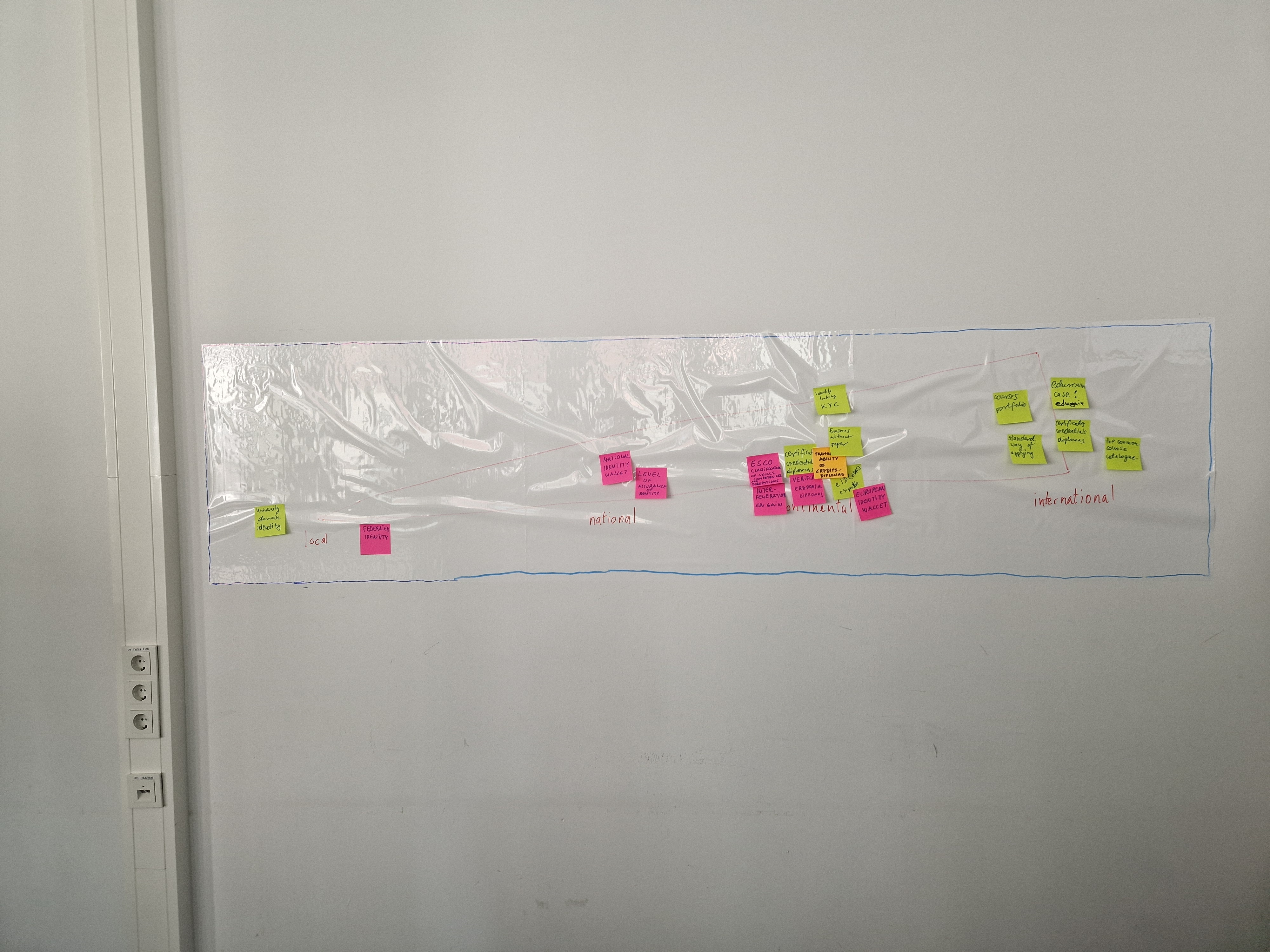


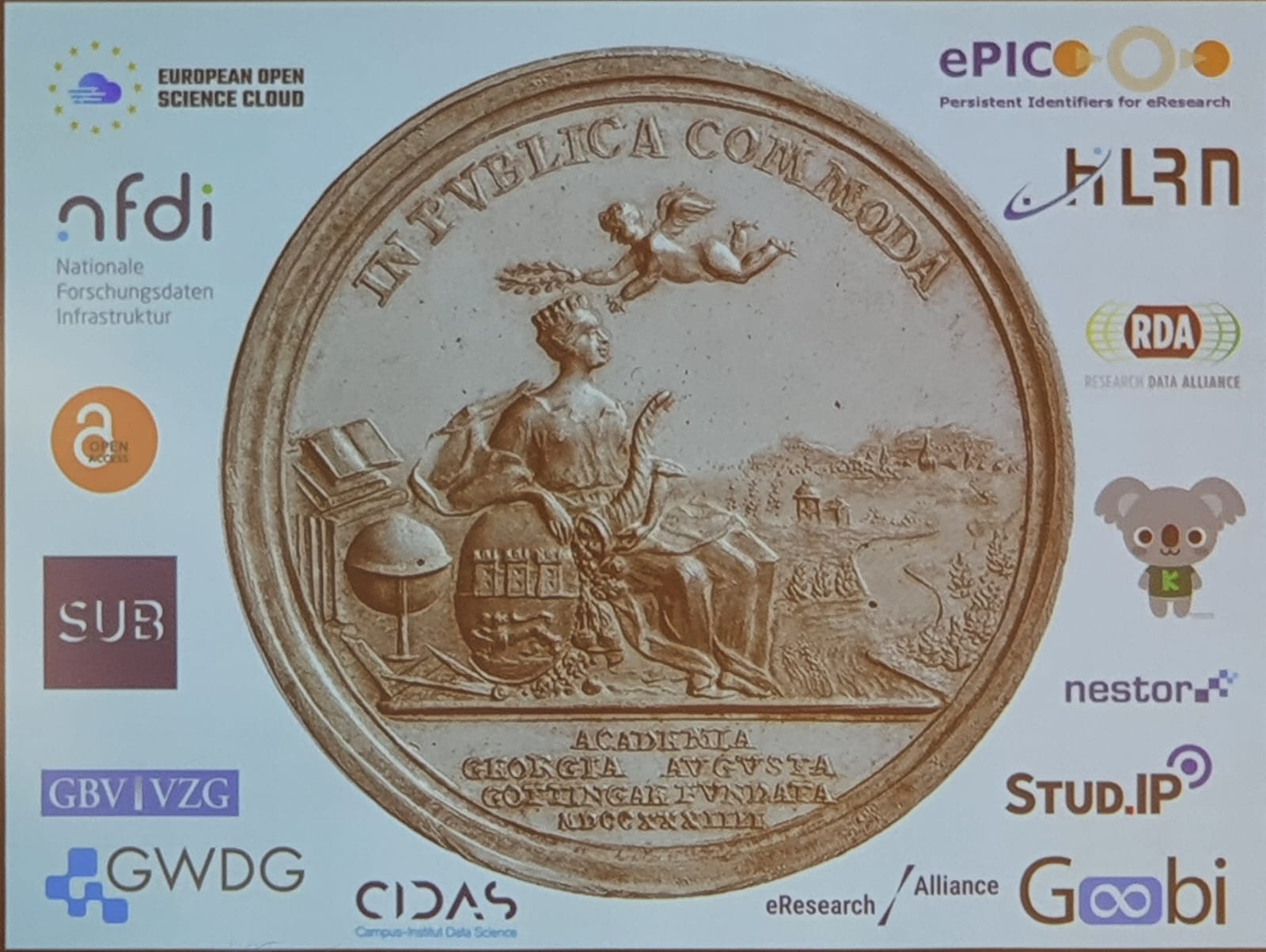




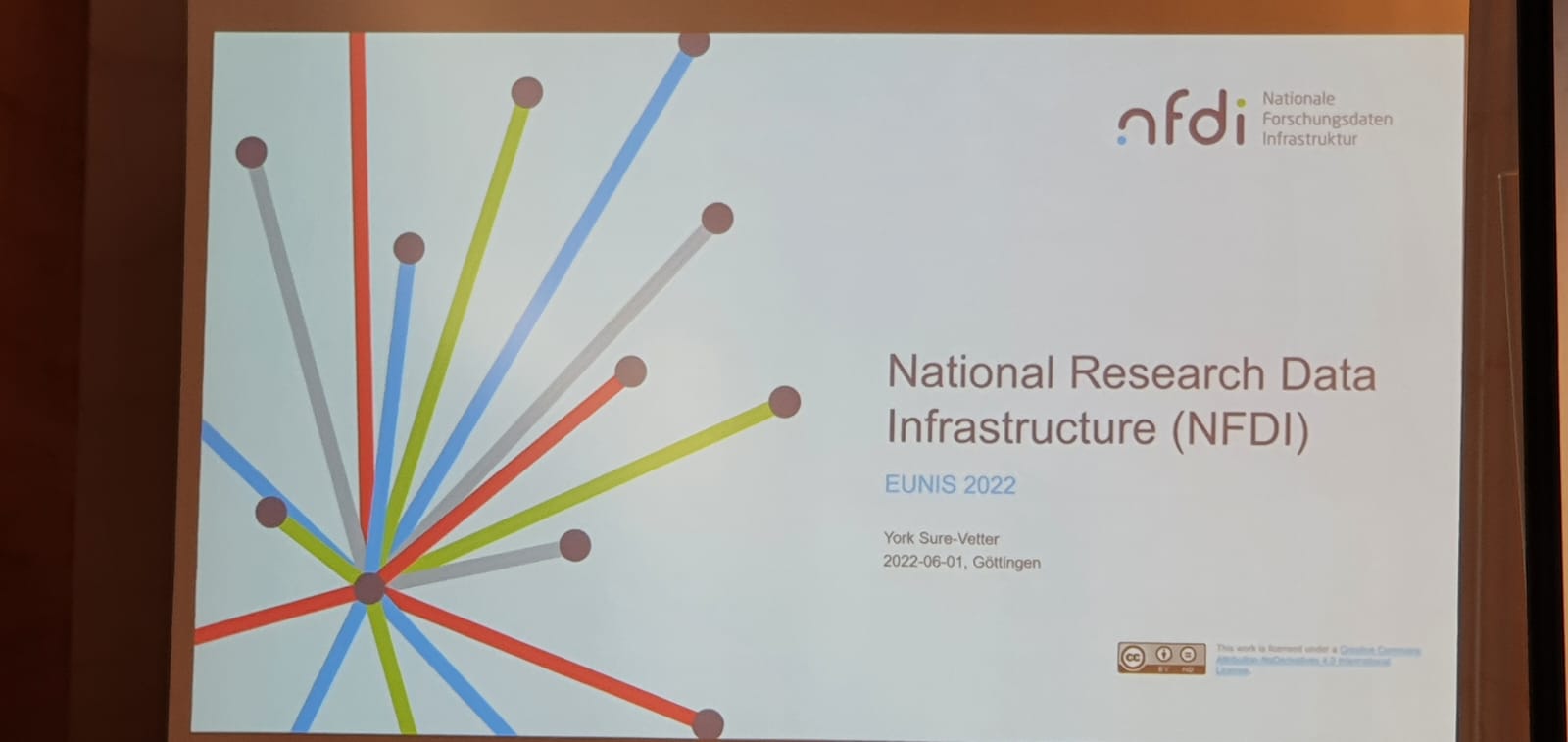

















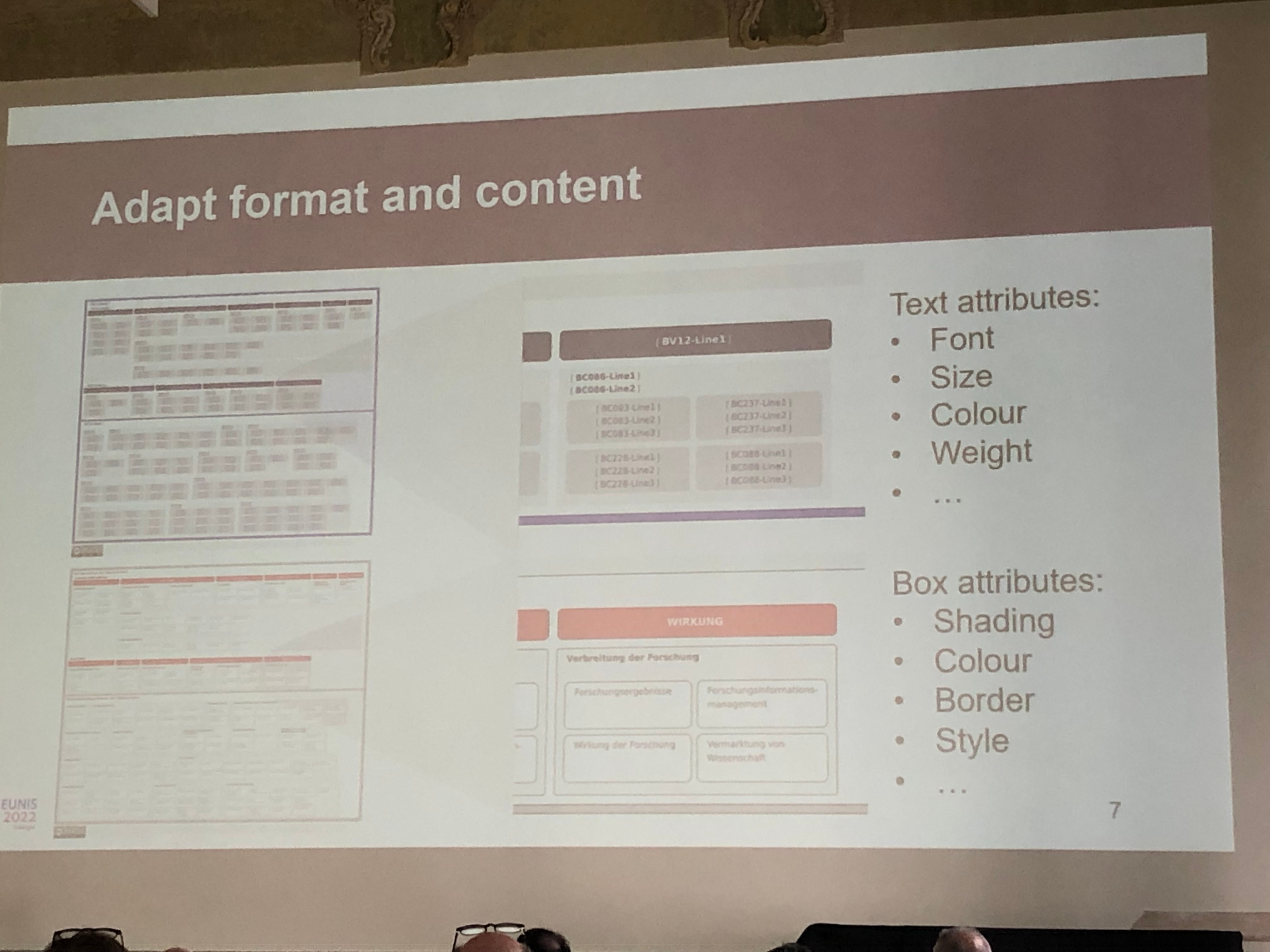

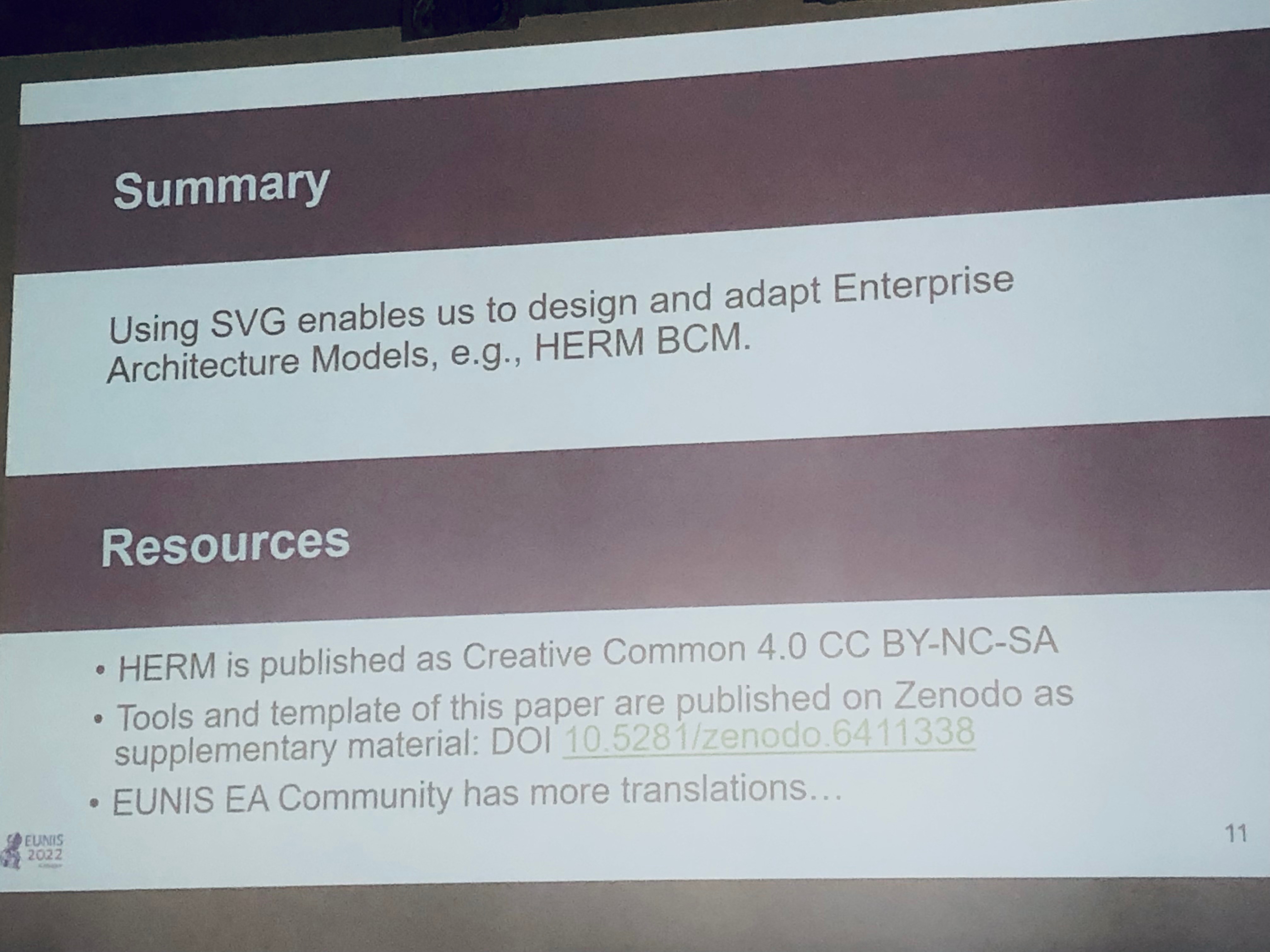




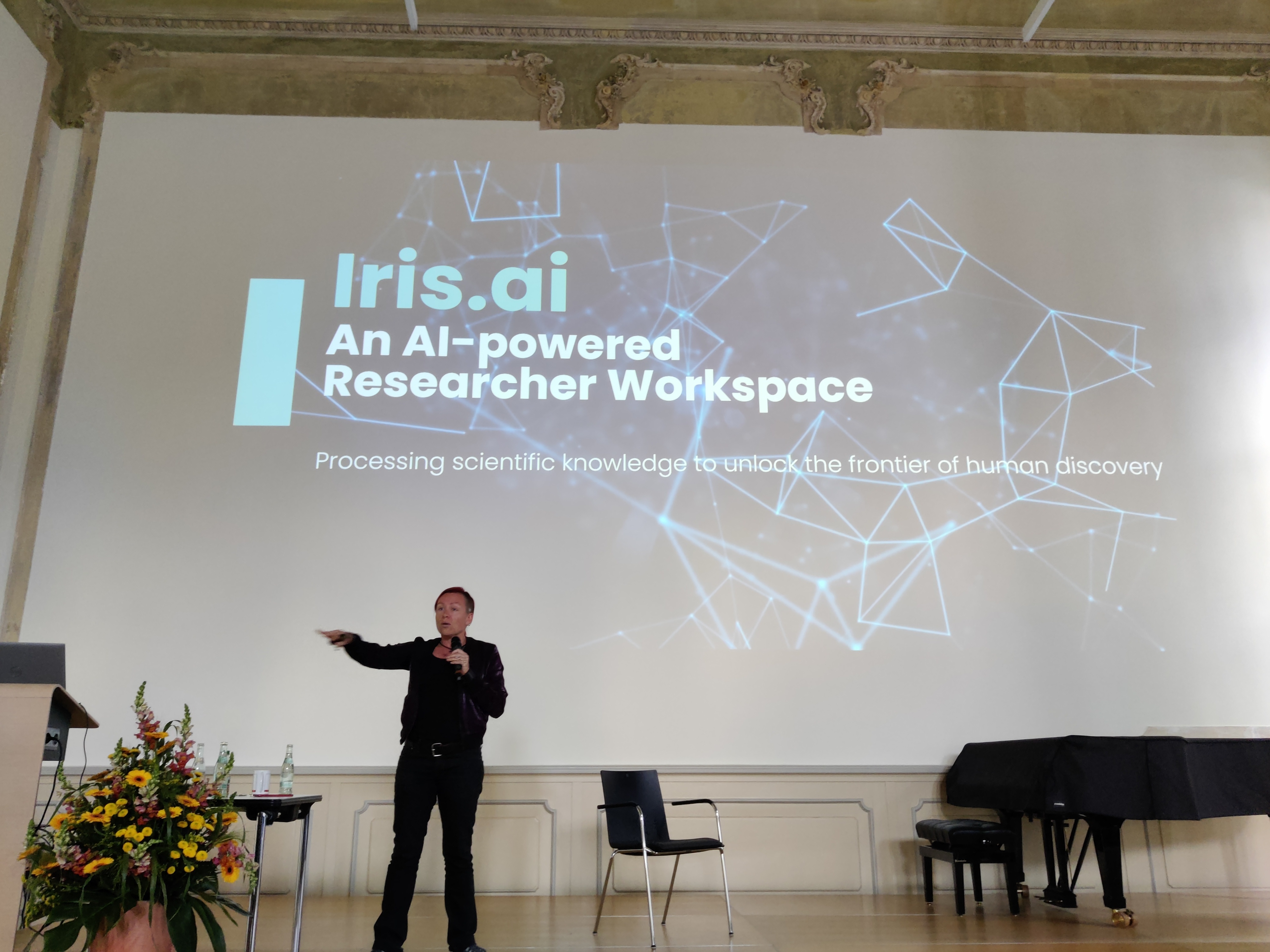









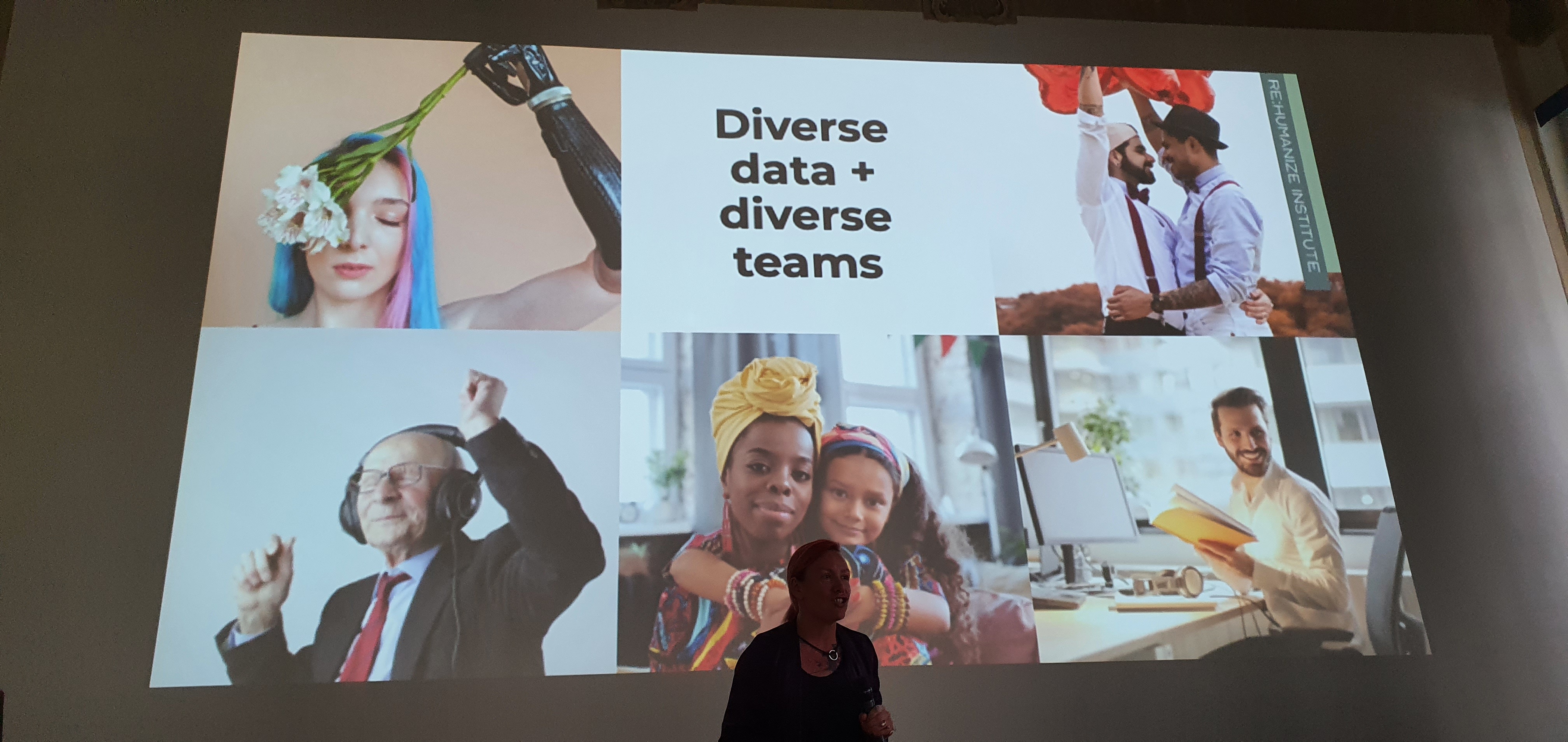

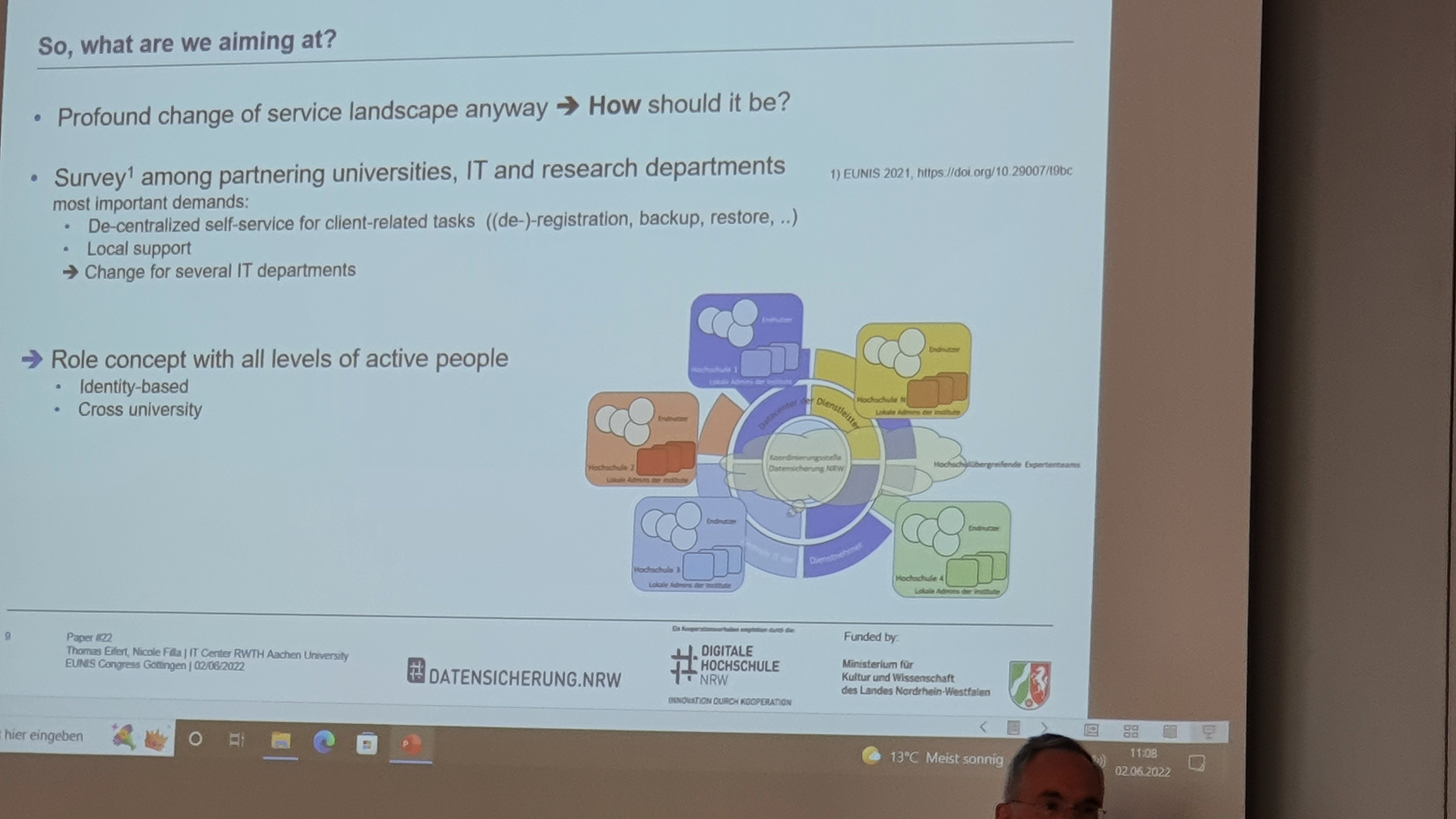





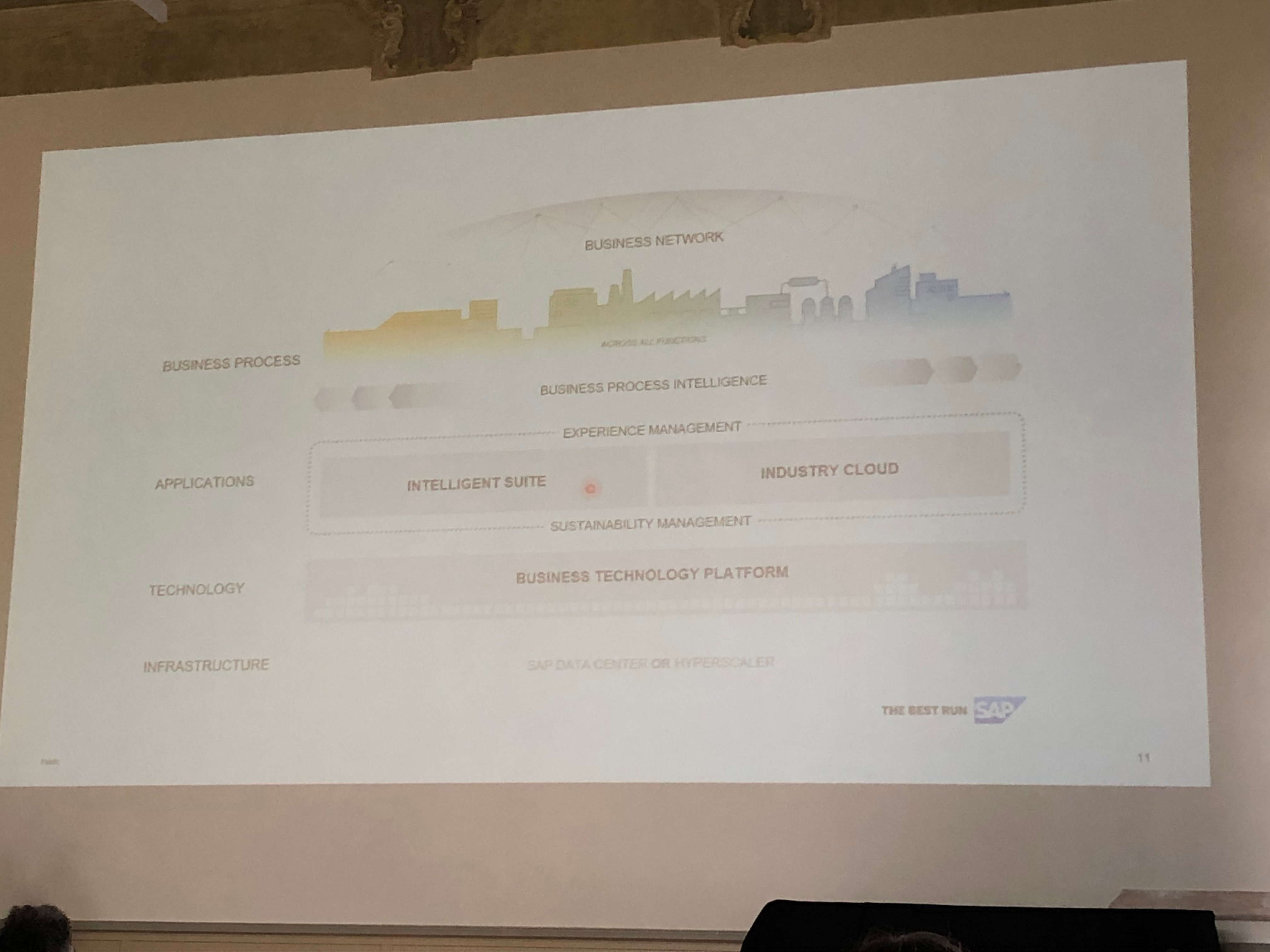






























1 Comment
Patrik Maltusch
Hyvin sunmattu tämä päivä!